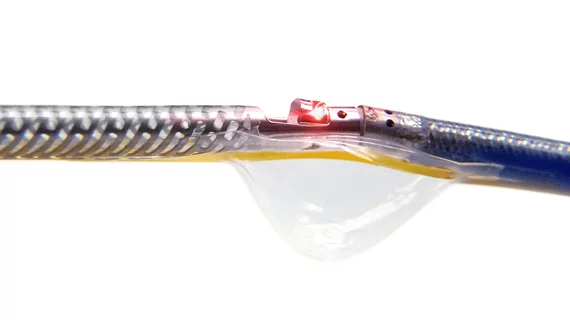Image-guided atherectomy system gains FDA approval
Avinger announced last week the FDA has approved its next-generation Pantheris Lumivascular atherectomy device, which is used to remove plaque from a blood vessel in those with peripheral artery disease (PAD).
According to the company’s press release, the system is the first to combine real-time intravascular imaging with the catheter-based procedure. It received CE mark approval in December 2017.
Avinger plans to offer two versions of its product in the U.S., one with a standard nosecone and the other with an extended version. The new-generation device also includes improvements aimed at increasing the positioning flexibility, pushability and tissue storage capacity of the device, according to the release.
“We are excited to introduce the next generation Pantheris to our network of physicians here in the United States,” said Jeff Soinski, Avinger’s president and CEO. “After extensive testing by our R&D and operations teams, physician design validation, and successful initial case experience in Europe across a variety of different lesion types, we believe this next generation device will significantly improve the user experience in terms of reliability, efficiency, and ease of use across a spectrum of clinical situations.”
The technology uses optical coherence tomography—which doesn’t require ionizing radiation—to help physicians navigate their devices and treat PAD lesions. Other atherectomy procedures rely on x-ray images for catheter guidance.
“The Pantheris Lumivascular atherectomy system has allowed me to treat peripheral artery disease with more precision while largely avoiding trauma to the blood vessel during an intervention,” Barry Tedder, MD, an interventional cardiologist at St. Bernards Medical Center in Jonesboro, Arkansas, said in the release. “As one of the first users of the initial generations of Pantheris, I have been eagerly awaiting the product enhancements incorporated into the new system, which has the promise of not only improving ease of use, but also providing a new level of operator control during the procedure.”

